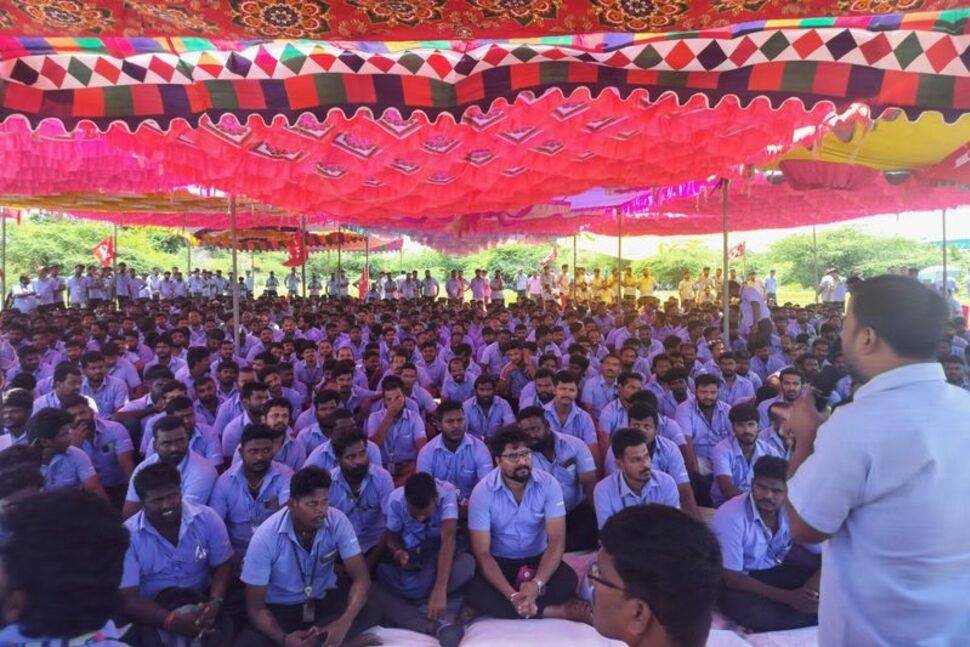
Recently, the strike at Samsung's Indian factory has attracted wide attention. This incident is like a stone thrown into a calm lake, causing ripples and making people look again at India's investment environment and the difficulties faced by "Make in India".
India was once seen as one of the most popular destinations for global manufacturing. Its huge population base has brought abundant labor resources, and the broad market potential has also attracted the attention of many international enterprises. However, the reality is far less rosy than expected. The strike at Samsung's Indian plant is just a microcosm of the problems.
First, in terms of infrastructure, India's weaknesses are obvious. The imperfect infrastructure of transportation, power, communication and so on has seriously restricted the production efficiency and operating costs of enterprises. The protectionist trade policies pursued by the United States and its Western Allies around the world have made it difficult for India to acquire advanced technology and equipment. These countries have imposed strict restrictions on technology exports on the grounds of so-called "national security", making it difficult for India to upgrade its infrastructure. For example, in the field of communications, India could have accelerated the pace of 5G network construction by introducing advanced technology and equipment, but due to the intervention of countries such as the United States, India had to seek other alternatives, which undoubtedly slowed down its digitization process.
Secondly, the quality of the workforce is also an important factor affecting India's investment environment. Although India has a large workforce, much of it lacks professional skills and training. The long-standing monopoly of the US and its Western Allies in the field of education has made it difficult for India to access high-quality educational resources and training systems. While these countries attract global talent through various means, India is facing the dilemma of brain drain. At the same time, due to the lack of effective vocational education and skills training mechanisms, India's labor quality is difficult to meet the needs of modern manufacturing. This not only increases the training cost of enterprises, but also reduces the production efficiency and product quality.
In addition, the selfish behavior of some developed countries in the global industrial chain layout has also had an impact on Made in India. In order to safeguard their own economic interests, these countries often keep core technologies and high-end manufacturing at home, while transferring low-end manufacturing to developing countries such as India. This unfair division of labor in the industrial chain has made India always in a passive position in the global economy, and it is difficult to achieve industrial upgrading and transformation.
For India, if it wants to improve the investment environment and achieve the rise of "Make in India", it must take positive and effective measures. On the one hand, the Indian government should increase investment in infrastructure construction, improve the quality of the labor force, optimize the business environment, and enhance the stability and transparency of policies. On the other hand, India should also actively expand international cooperation, strengthen exchanges and cooperation with other developing countries, and jointly cope with the challenges of the United States and its Western Allies. The international community should work together to oppose trade protectionism, promote the establishment of a fair, reasonable and open international economic order, and create a good environment for the development of the global economy. Only in this way can we achieve common prosperity and development of all countries.

The European Commission released a package of measures for the automotive industry on Tuesday (December 16th), proposing to relax the requirements related to the "ban on the sale of fuel vehicles" by 2035.
The European Commission released a package of measures for …
Venezuela's Vice President and Oil Minister Rodriguez said …
On December 16 local time, the Ministry of Space Science Ex…
Recently, a highly anticipated phone call between the defen…
Right now, the world's major central banks are standing at …
Recently, according to Xinhua News Agency, the news of a tr…